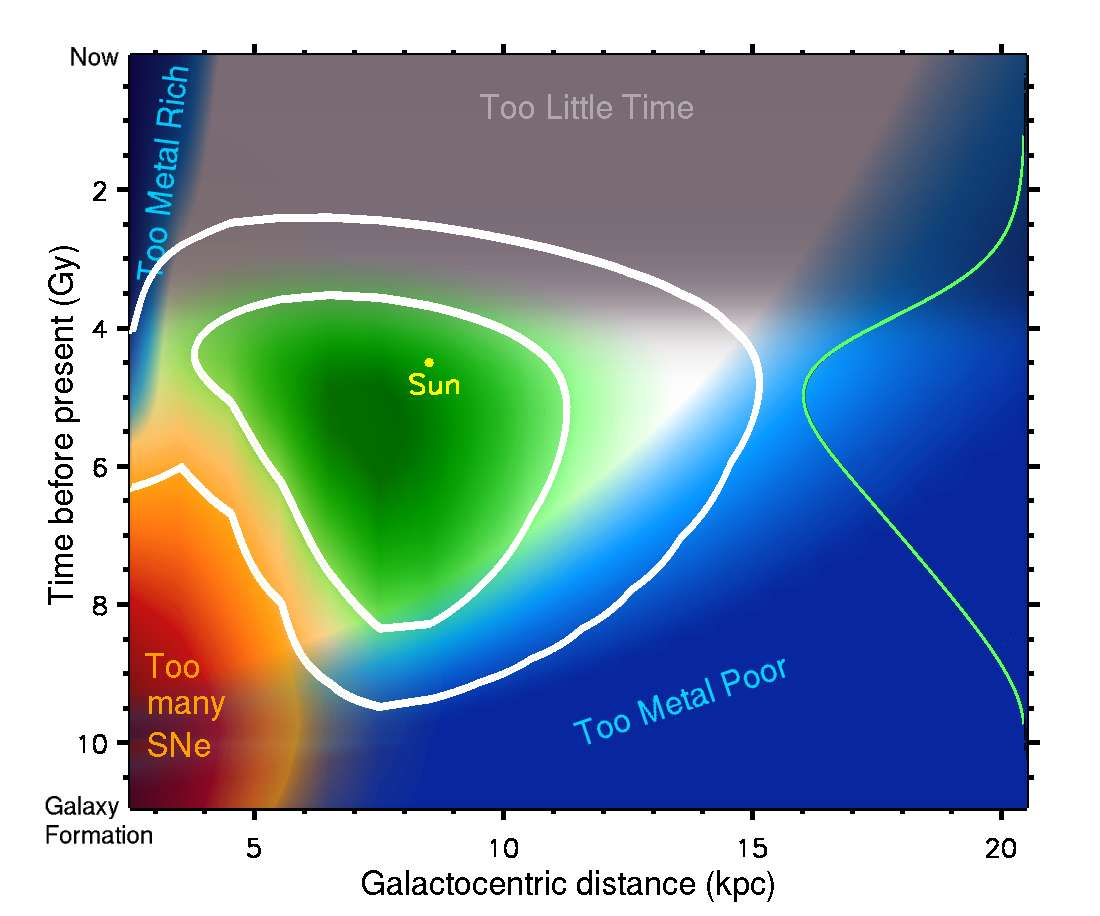How to Find a Habitable Planet
James Kasting, Central, 576.839 K19h 2010
A counter to "Rare Earth" by Ward and Brownlee, 2000. Kasting answers a subset of the many questions raised in that book, and extended by other writers; not convincingly IMHO.
Kasting is a little slippery with the requirements of "habitable". Ward and Brownlee were thinking about human evolvable and habitable, very restrictive. Could beings like us evolve and live there? An absurdly ultrastrict definition would say the Earth itself wasn't habitable until Homo Sapiens evolved, and isn't habitable now (no niche for humans to re-evolve into). A gentler series of restrictions are possible, IMHO, consider this cheesy, anthropocentric "habitability scale":
H0 |
Armored humans instantly vaporized, frozen, crushed, |
inside a star or Jupiter's atmosphere |
H1 |
Survivable with extreme technology |
Orbiting space colony, aerostats in upper Venus atmosphere |
H2 |
Arguably terraformable |
Heavily modified Mars (but lacking industrial minerals) |
H3 |
Supports simple life, but unsurvivable for humans |
"super-earths" in optimal conditions, or wild climate swings |
H4 |
Evolving towards human survivability |
Earth before 300 MYa |
H5 |
"shirtsleeve" human habitable |
Mesozoic/Cenozoic Earth (but no grasses yet) |
H6 |
Evolved intelligent life |
Quaternary Earth, < 2.6 MYa |
H7 |
Star travelling intelligent life |
no known examples |
My guess is that Ward and Brownlee are talking about H5 or better, while Kasting is talking about H3 or better. Even a highly evolved life-bearing super-Earth is unlikely to have space travel, and while that super-Earth may have plate tectonics, gravitational stratification of elements may reduce the potential for complex chemistry.
Figure 2.26 of Perryman's Exoplanet Handbook (2011) shows a wide range of exoplanet eccentricities (many up to 0.6), compared to the Earth's nearly circular 1.6% (0.016). Given the cycle of ice ages the Earth is currently enduring when its tiny eccentricity interacts with its axial tilt and continental asymmetry, those large eccentricities seem likely to introduce too much climatic variation for large animals to survive.
Numerous M dwarf stars have planets in their "habitable zone", but with large tidal forces (inverse-cube!) that could lock them with one face always toward the small star - which would emit more UV and solar wind, potentially stripping the atmosphere of a planet. Kasting points out that Mercury is within the tidal locking radius of the Sun, but is in spin-lock resonance, making 3 rotations in two orbits. It is slightly elongated, and in a highly eccentric (e=0.21) orbit, so the the bulges tend to align radially at perhelion. It spinlocked stably without settling into synchronicity, one side freezing and one side baking. This is an interesting point, but can a 20-times-heavier Earth-size (or super-Earth-size) planet be that elongated?
Figure 10.6 is interesting, a diagram of the galactic habitable zone adapted from Figure 3 of Charles Lineweaver et. al. 2004. Kasting doesn't explain what the white contours mean; the outer contour is 95% of the potentially suitable systems, and the inner contour is 68%, less than 10% of the stars ever formed in the Milky Way. Lineweaver doesn't explain the green, white, and light blue colors; those may relate to star density, very low far from the center of our galaxy.

